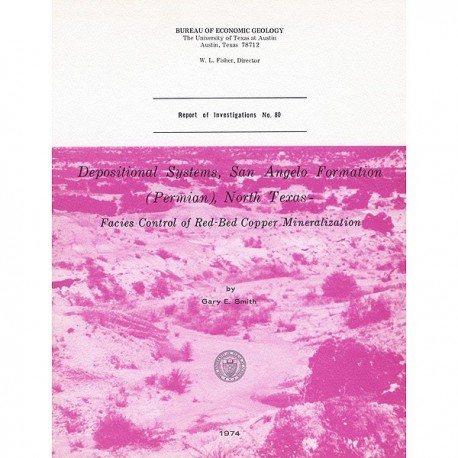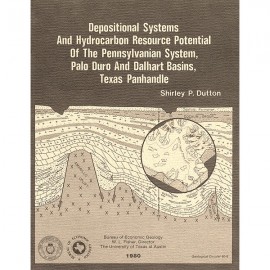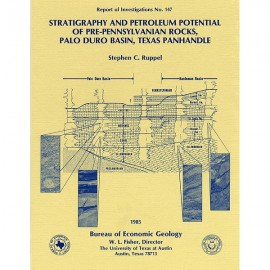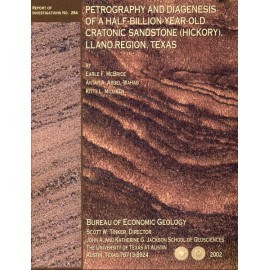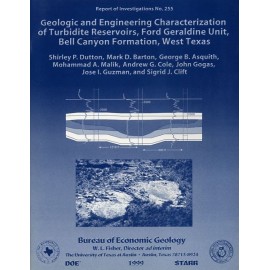Reports of Investigations
-
Books & Reports
- Reports of Investigations
- Guidebooks
- Udden Series
- Geological Circulars
- Down To Earth
- Atlases of Major Oil and Gas Reservoirs
- Texas Memorial Museum Publications
- Environmental Geologic Atlas of the Texas Coastal Zone
- Mineral Resource Circulars
- Other Reports
- Seminars and Workshops
- Handbooks
- Submerged Lands of Texas
- Symposia
- Annual Reports
- Open File Reports
-
Maps & Cross Sections
- Thematic Maps
- Miscellaneous Maps, Charts & Sections
- Geologic Atlas of Texas
- STATEMAP Project Maps
- Geologic Quadrangle Maps
- Cross Sections
- Highway Geology Map
- Energy and Mineral Resource Maps
- Shoreline Change and Other Posters
- Wilcox Group, East Texas, Geological / Hydrological Folios
- Bouguer Gravity Atlas of Texas
- River Basin Regional Studies
- Featured Maps
- Posters
- Teachers & the Public
-
Geological Society Publications
- Gulf Coast Association of Geological Societies
- Alabama Geological Society
- Austin Geological Society
- Corpus Christi Geological Society
- Houston Geological Society
- Lafayette Geological Society
- Mississippi Geological Society
- New Orleans Geological Society
- South Texas Geological Society
- GCS SEPM Publications
- Historic BEG & UT Series
Depositional Systems, San Angelo Formation (Permian), North Texas: Facies Control of Red-Bed Copper Mineralization
RI0080
Depositional Systems, San Angelo Formation (Permian) North Texas--Facies Control of Red-Bed Copper Mineralization, by G. E. Smith. 74 p., 20 figs., 1 table, 9 plates, 9 appendices, 1974. ISSN: 0082335X: Print Version.
A free, digital version of this publication can be found on: Texas ScholarWorks
RI0080. Depositional Systems, San Angelo Formation (Permian) North Texas--Facies Control of Red-Bed Copper Mineralization, by G. E. Smith. 74 p., 20 figs., 1 table, 9 plates, 9 appendices, 1974. ISSN: 0082335X: Print.
To purchase this publication as a downloadable PDF, please order RI0080D.
ABSTRACT
The San Angelo Formation is a mid-Permian sandstone and mudstone sequence about 100 feet thick that crops out in North Texas and dips westward into the Midland Basin; it is composed of two superposed members: the basal Duncan Sandstone Member and the overlying Flowerpot Mudstone Member. Depositional systems within the Duncan Member include the Copper Breaks deltaic system in the north, the Old Glory fluvial-deltaic system in the south, and the intermediate, strike-fed Buzzard Peak sand-rich tidal-flat system. Gradationally above these systems is the Cedar Mountain mud-rich tidal-flat system which is coincident with the Flowerpot Member. Cedar Mountain facies include tidal channel-fill sandstone characterized by flaser bedding, red mudstone of tidal mudflat origin, and algally bound shale and dolomite.
Cedar Mountain facies are overlain conformably by the Blaine Formation, which was deposited within alternating sabkha and tidal-flat framework of the Blaine sabkha and tidal-flat system.
Copper mineralization occurs primarily within narrow, lenticular, organic-rich tidal channel-fill sandstone facies and thin, widespread algal mat shale facies. A sabkha-diagenetic model is used to explain the mineralization. Evaporative discharge from a sabkha creates an upward decrease in hydrodynamic potential with the result that primarily terrestrial ground water moves upward through the sabkha. Hydrogen sulfide, formed by bacteria, precipitates copper as ground water passes through chemically favorable facies. Calculations indicate that 100,000 to 200,000 years may be necessary to form an economic deposit; alternate epigenetic models, involving diffusion over long distances, or movement of hydrothermal solutions along faults and fractures, were evaluated. Copper minerals include chalcocite, covellite, and malachite.
Keywords: Blaine Formation, copper, depositional systems, minerals, mineralization, North Texas, Permian, red beds, San Angelo Formation, Texas
Citation
Smith, G. E., 1974, Depositional Systems, San Angelo Formation (Permian) North Texas--Facies Control of Red-Bed Copper Mineralization: The University of Texas at Austin, Bureau of Economic Geology, Report of Investigations No. 80, 74 p.
